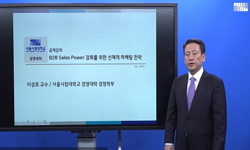The carrier is liable for damages sustained in the event of the destination or loss of, damage to any goods, if the destruction which caused the damage so sustained took place during the carriage by sea. If a carrier fails to prove that he or the crew...
http://chineseinput.net/에서 pinyin(병음)방식으로 중국어를 변환할 수 있습니다.
변환된 중국어를 복사하여 사용하시면 됩니다.
- 中文 을 입력하시려면 zhongwen을 입력하시고 space를누르시면됩니다.
- 北京 을 입력하시려면 beijing을 입력하시고 space를 누르시면 됩니다.

해상운송인의 정액배상주의에 관한 비교법적 검토 -상법 제815조가 준용하는 제137조의 의미와 법적 성격에 대한 논의를 중심으로- = Comparative Review on the Principle of the Fixed Compensation for Damages under the Korean Maritime Law -Focused on Interpretative Analysis on Legal Nature of It-
한글로보기https://www.riss.kr/link?id=A100000827
- 저자
- 발행기관
- 학술지명
- 권호사항
-
발행연도
2014
-
작성언어
-
- 주제어
-
KDC
300
-
등재정보
KCI등재
-
자료형태
학술저널
- 발행기관 URL
-
수록면
53-91(39쪽)
- 제공처
- 소장기관
-
0
상세조회 -
0
다운로드
부가정보
다국어 초록 (Multilingual Abstract)
The carrier is liable for damages sustained in the event of the destination or loss of, damage to any goods, if the destruction which caused the damage so sustained took place during the carriage by sea. If a carrier fails to prove that he or the crew or other employee of a ship exercised his duty of care in reception, loading, stowage, carriage, keeping, discharging and delivering of the goods, he shall be liable to compensate for damages caused by loss, damage or delay in delivery of the goods. If the goods have been lost totally or have been delayed in delivery in arrival, the amount of damages shall be determined by the market value prevailing at the destination on the day on which they were delivered. In case of a partial loss of or injury to the goods, the amount of damages shall be determined by the value prevailing at the destination on the way on which they were delivered. Where the loss, injury and delay in delivery in arrival of the goods have arisen from the intention of or gross negligence of the carrier, he shall be liable for all damages under the Article 137 of the Korean Commercial Code. Article 137 declares the ‘arrived value’ principle, which means that― in order to calculate the value of the performance that a consignee should have received under the contract of carriage―the decision maker looks to the value that the goods would have had if they had arrived safely at the contractually agreed place of delivery when they were supposed to arrived there. This mirrors the existing practice as well as the legal framework provided for by Article 4(5)(b) of the Hague Visby Rules. Article 137 does not expressly mention limitation of liability, but its purpose seems to unify the rules generally followed to calculate damages in case of loss or damage or delay in delivery of the goods carried by sea. The amounts calculated by this formula are not a ‘forfeit’ compensation. The exclusion of consequential damages is not an issue of limitation but rather than an issue of measure of damages. The cargo interests must prove that they have actually suffered loss or damage up to this amount. If Article 137 (5) will clarify what was not applied in a uniform manner under Article 4(5)(b) of the Hague Visby Rules-the compensation calculated by applying the formula of Article 137 (1) and (2) is effectively a limitation of liability because no compensation higher than the amounts calculated pursuant to Article 137 can be claimed by the cargo interests.
동일학술지(권/호) 다른 논문
-
- 한국해법학회
- 윤석희 ( Seug Hee Yoon )
- 2014
- KCI등재
-
항해용선계약상 중재조항의 용선계약 선하증권에의 편입 -서울고등법원 2008.12.11.선고 2007가합61217판결-
- 한국해법학회
- 이원정 ( Won Jeong Lee )
- 2014
- KCI등재
-
- 한국해법학회
- 김찬영 ( Chan Young Kim )
- 2014
- KCI등재
-
선체용선계약에서 반선 -Barecon 2001의 해석을 중심으로-
- 한국해법학회
- 정영석 ( Yeong Seok Cheong )
- 2014
- KCI등재




 KCI
KCI KISS
KISS







